The Alfa Romeo Giulia Veloce continues to be one of the best driver’s cars in its class. On the road, in Italy and in the mountains, it still delivers
Let’s see now. Flying to Italy, picking up a red Alfa Romeo Giulia Veloce, and then heading out to the mountains to explore some of the country’s fine Alpine passes. Yes, I know, it sounds like a terrible job. But hey, a few weeks back, a certain writer was fortunate enough to have this all come together. And, reader, let me tell you it was one road trip that lived up to all expectations, albeit with one surprise….
Italy of course is wonderful and just happens to be one of my favourite destinations. Over the years, I’ve loved the buzz of driving up and over some of those spectacular passes through the Italian Alps; the Stelvio, Great St Bernard and Passo Gavia being three particular faves.
It’s the drama of those ascents that thrills the senses. Making your way up high, finally making it to the summit. The achievement of getting there. The stillness of the mountain air. The views, oh yes, the views. Fantastic, can’t get enough of it.
Then there’s the Alfa Romeo Giulia, Alfa’s compact sports saloon; fast and purposeful, a model that would seem tailor made for this particular mountain climbing expedition, would it not?
All of which brings us to a scenario that sees me flying into Turin’s Caselle airport and meeting Valentino, my affable Italian contact from Stellantis who has a red Alfa Romeo Giulia Veloce Q4 all ready and waiting for me.
The Giulia is Italy’s home grown answer for the BMW 3-Series and is both a capable and engaging 2.0-litre rear-drive sports saloon. These days, you find the four cylinder 280 bhp Veloce positioned some midway through the Giulia line up, with UK prices kicking off at (a recently reduced) £45,595.
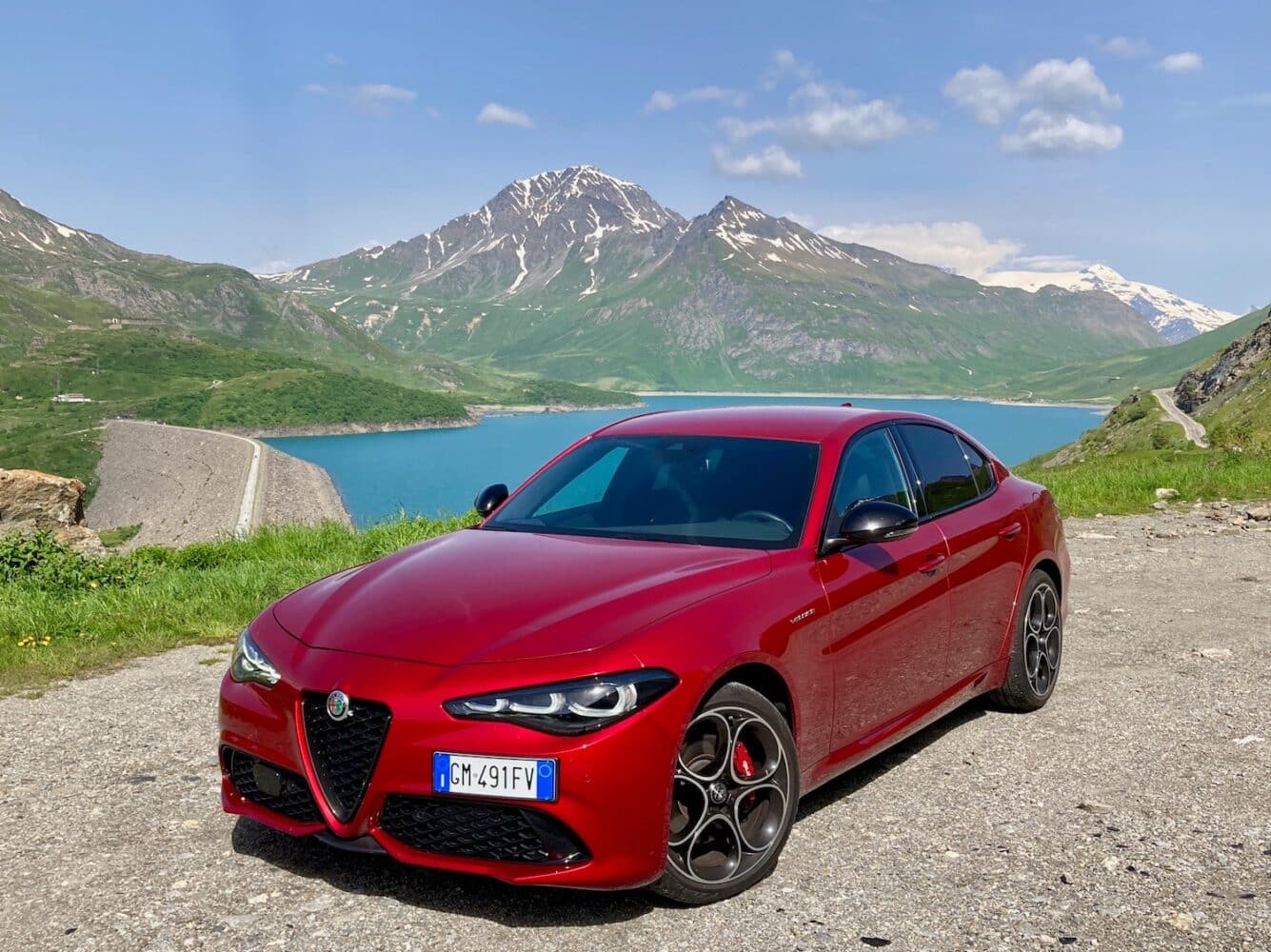
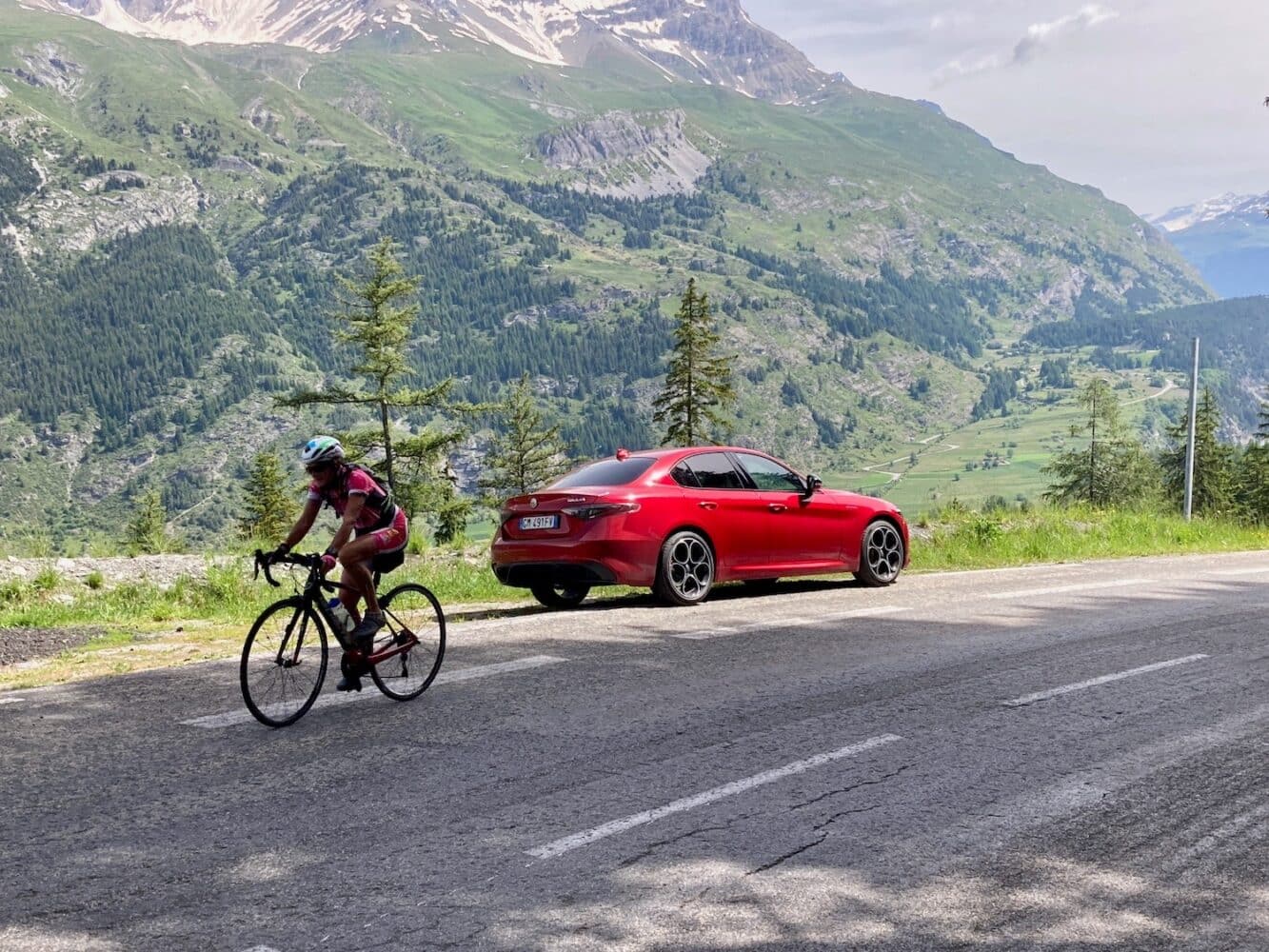
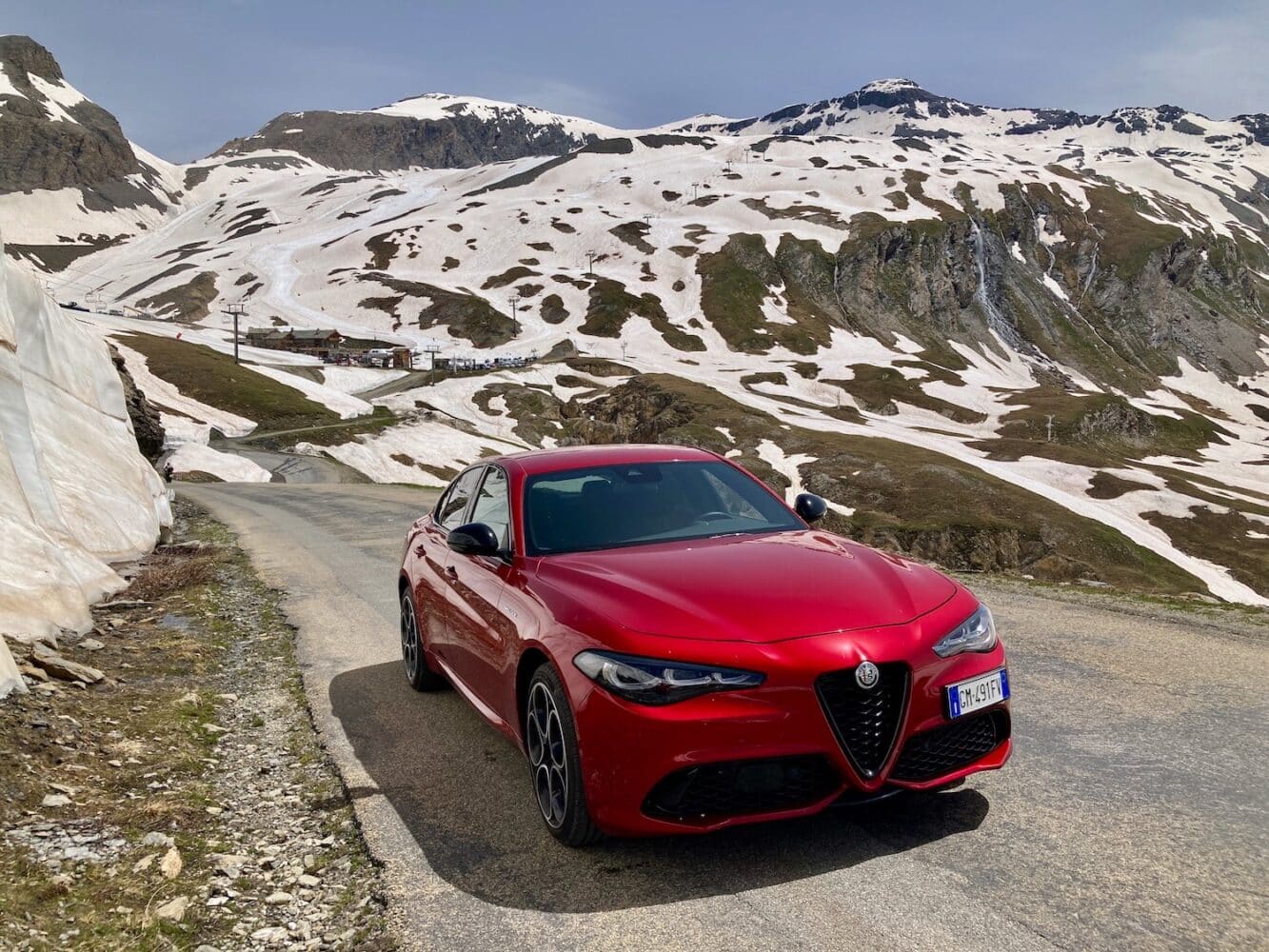
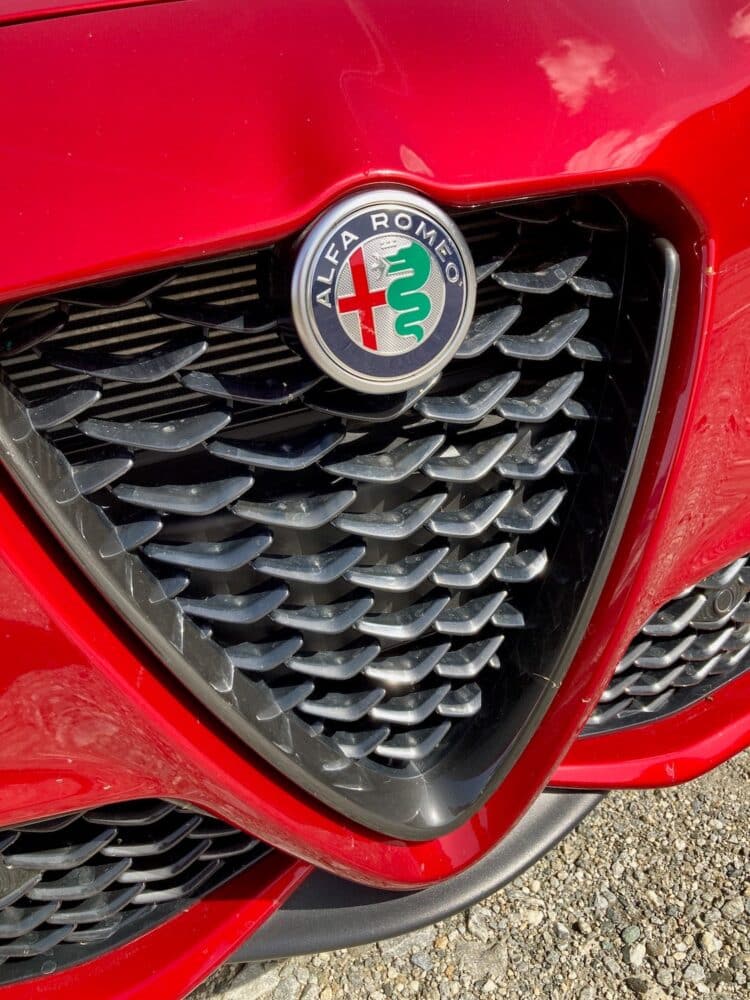


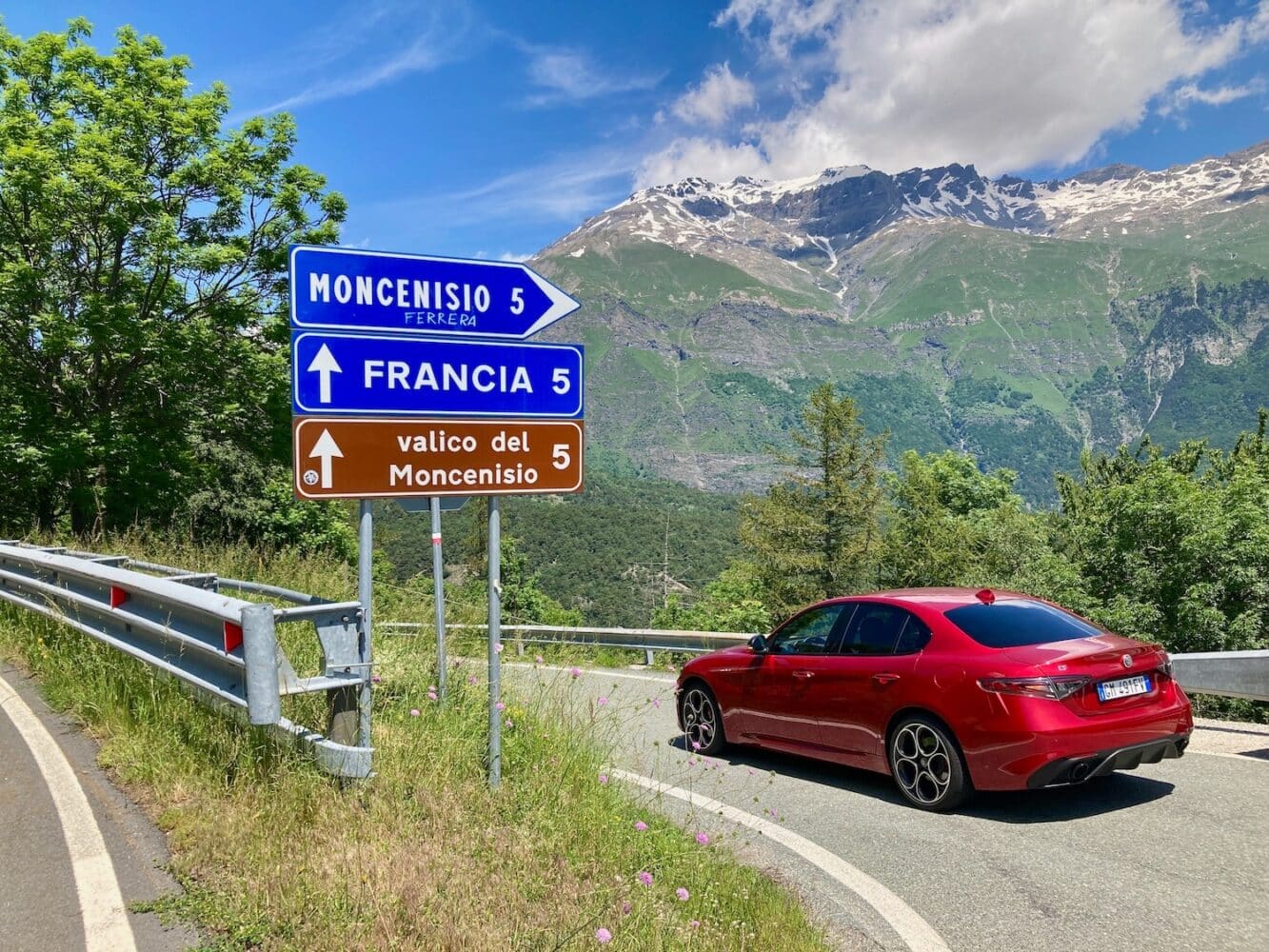
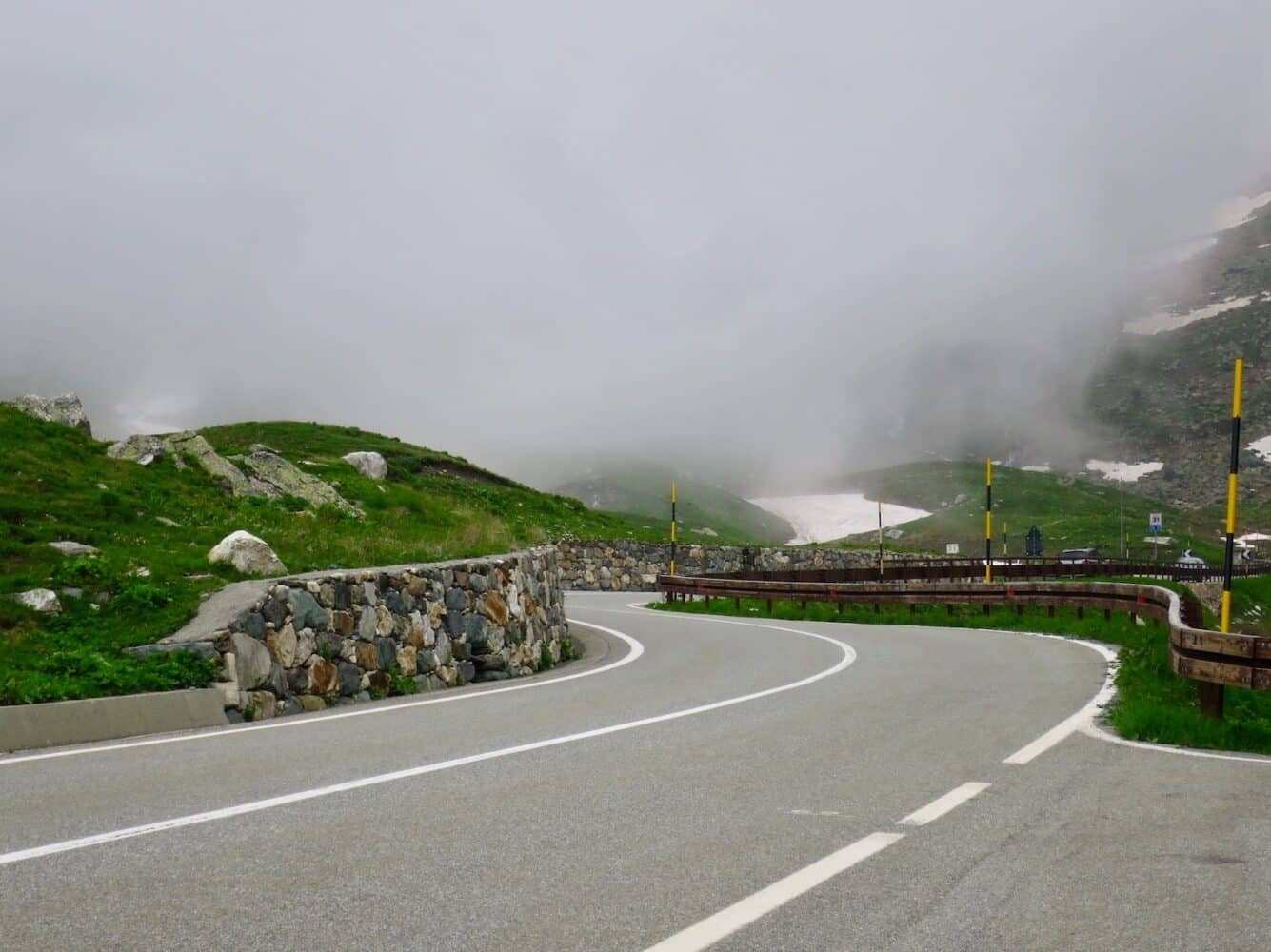
The Q4 tag meantime means all-wheel-drive, a variant never offered with the Giulia in the UK. So here’s an intriguing opportunity. How does the Giulia Veloce Q4 compare to the two wheel-drive Giulia Veloce that we get here?
Quick answer: same, only different. A touch heavier but it’s a system that keeps the Giulia well planted and stable, with the all seasons security of all-wheel-drive ever present in the background. We’ll get back to this one later on.
Ahead, I have three days of driving, taking in four classic mountain passes, before returning to Turin and a stay in Lingotto, the legendary former Fiat factory (yes, the one with the test track on the roof) that featured in the Italian Job.
Lingotto has now been repurposed into a classy, atmospheric hotel and large shopping/conference centre and gallery. It still oozes history.
Leaving Caselle I head out for the small town of Susa and the gateway to the ascents and epic scenery of Moncenisio (or Mont Cenis), a route I’ve done several times in a number of cars.
This is a superb mountain pass between Italy and France, the road first built by Napoleon between 1802 and 1805. Today, this is the SS25. It’s wide, well surfaced, immaculate, a dream to drive. At the top, at 2085 metres, there’s a huge lake where it’s time to chill and enjoy a relaxing outdoor lunch in the sun.
Climbing up through the many hairpins, the Giulia is impressive; fast and fluent, the steering sharp and accurate, making it easy to place on the road. And fun.
With 50:50 weight distribution, the Giulia is perfectly balanced and neutral steer. The 19-inch Bridgestones provide prodigious levels of grip.
So looking good and that goes for its potent 280ps output too. Power delivery is smooth, accessible, the engine revving keenly even close to the 5500rpm red line. There’s torque aplenty too, a meaty 400Nm arriving at just 2250rpm so the low/mid-range pick up bases are completely covered. Driveability, no problem.
You just wish the Alfa’s 8-speed ZF auto box would be a touch more communicative at times, especially when diving in and out of a tight mountain bend (and, yes, there are lots of those on this trip). The box can momentarily get lost as it drops down low and hunts for the right ratio.
You get better response if you make use of the Alfa’s superb steering wheel paddle shifts. These look and feel top quality. The same cannot quite be said of the gearlever itself, alas. The finish of this small, humble yet vital everyday component feels cheap. Should have been updated years ago.
As you climb Moncenisio, dueling with the many bikers and cyclists who also love the mountains, you eventually pass seamlessly into France then wind your way down the other side past an arresting vista of small waterfalls, streams and tall trees into the town of Lanslebourg.
Moncenisio is a picturesque mountain pass located in the Cottian Alps, on the border between Italy and France. Known for its stunning alpine landscapes, winding roads, and historic significance, it’s a must-visit for any Alfa Romeo enthusiast seeking a scenic and challenging driving experience.
- Scenic Beauty: The pass offers breathtaking panoramic views of glaciers, snow-capped peaks, and lush valleys. The combination of natural beauty and winding roads creates a truly unforgettable driving experience.
- Challenging Drive: With its steep gradients, sharp turns, and narrow sections, Moncenisio provides a rewarding challenge for Alfa Romeo drivers. The pass’s technical nature allows you to fully appreciate the car’s handling, performance, and braking capabilities.
- Historic Significance: The pass has a rich history, dating back to Roman times. It was once a major trade route between Italy and France. Along the way, you’ll find historic landmarks and charming villages that offer a glimpse into the region’s past.
- Perfect for a Day Trip: Moncenisio is easily accessible from Turin and other nearby cities, making it a great option for a day trip. You can combine your drive with a visit to the nearby ski resorts or explore the charming villages in the surrounding area.
If you’re looking for a scenic and challenging driving experience that showcases the beauty of the Italian Alps, Moncenisio is the perfect destination for your Alfa Romeo.